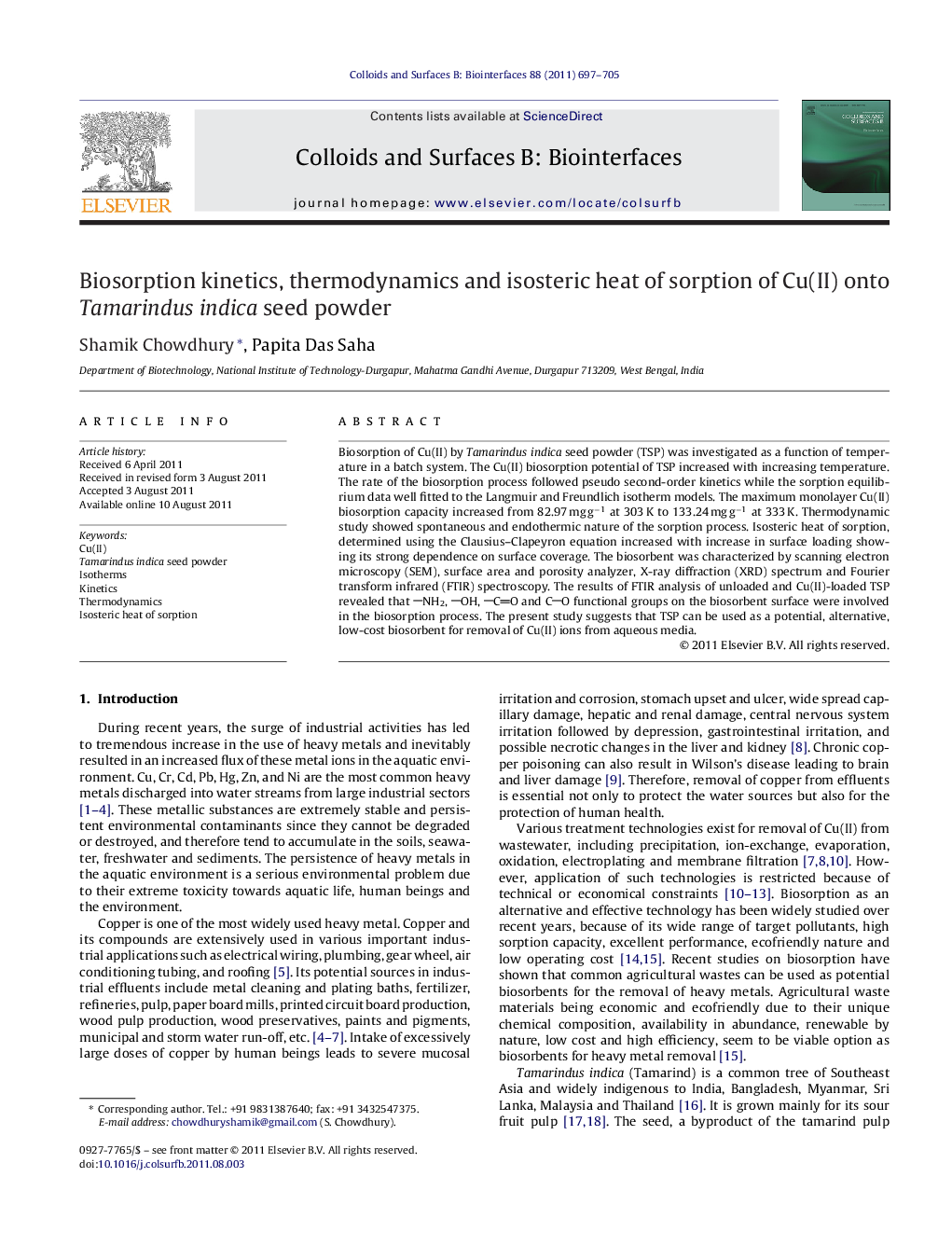| Article ID | Journal | Published Year | Pages | File Type |
|---|---|---|---|---|
| 601115 | Colloids and Surfaces B: Biointerfaces | 2011 | 9 Pages |
Biosorption of Cu(II) by Tamarindus indica seed powder (TSP) was investigated as a function of temperature in a batch system. The Cu(II) biosorption potential of TSP increased with increasing temperature. The rate of the biosorption process followed pseudo second-order kinetics while the sorption equilibrium data well fitted to the Langmuir and Freundlich isotherm models. The maximum monolayer Cu(II) biosorption capacity increased from 82.97 mg g−1 at 303 K to 133.24 mg g−1 at 333 K. Thermodynamic study showed spontaneous and endothermic nature of the sorption process. Isosteric heat of sorption, determined using the Clausius–Clapeyron equation increased with increase in surface loading showing its strong dependence on surface coverage. The biosorbent was characterized by scanning electron microscopy (SEM), surface area and porosity analyzer, X-ray diffraction (XRD) spectrum and Fourier transform infrared (FTIR) spectroscopy. The results of FTIR analysis of unloaded and Cu(II)-loaded TSP revealed that NH2, OH, CO and CO functional groups on the biosorbent surface were involved in the biosorption process. The present study suggests that TSP can be used as a potential, alternative, low-cost biosorbent for removal of Cu(II) ions from aqueous media.
Graphical abstractFigure optionsDownload full-size imageDownload as PowerPoint slideHighlights► Biosorption of Cu(II) by T. indica seed powder evaluated as function of temperature. ► The biosorption process followed pseudo-second order kinetics. ► Biosorption equilibrium data well fitted to both Langmuir and Freundlich isotherms. ► Thermodynamic study indicated endothermic nature of the biosorption process. ► Isosteric heat of sorption increased with increase in surface loading.
